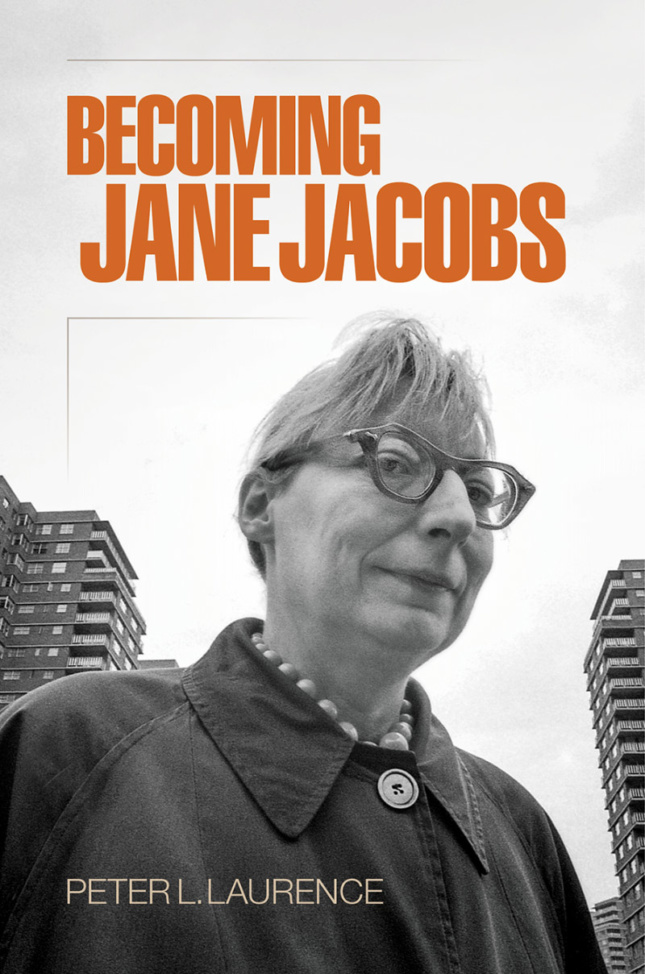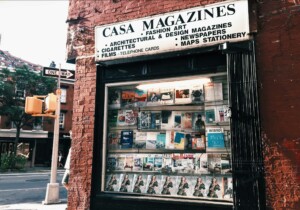Becoming Jane Jacobs
By Peter Laurence
University of Pennsylvania Press
$29.99
Peter Laurence’s Becoming Jane Jacobs opens in 1935. This is when the 19-year-old Jane Butzner, fresh out of high school, infused with a love of poetry and driven by a streak of rebelliousness, left Scranton, Pennsylvania, and headed for New York City, bent on becoming a writer. The book closes 25 years later, in 1961, on the eve of the publication of her classic Death and Life of the Great American Cities. This scrupulously and minutely documented intellectual biography, based on extensive original archival research, set against a detailed history of urban policies adopted between the early Roosevelt and late Eisenhower administrations, reveals how the mind-set of the legendary author and activist was formed in the intervening years.
This formative period breaks into two parts. The first stretches from 1935 to 1952. Two things are surprising during this period. One is that Jacobs was only tangentially interested in architectural and urban concerns; the other is that she did not get a university education. Indeed, Jacobs’s poor grades in high school ensured that she was turned down when she eventually applied to Columbia University, an experience that nurtured a lifelong abhorrence of academia, in particular of the Ivy League.
Left to her own devices, she was obliged to pursue other, out-of the way paths to acquiring knowledge, unconventionally broad and multidisciplinary. It starts when she landed a job as a writer and associate editor for The Iron Age, an industry trade magazine. She then worked as writer, editor, and then bureau chief for Amerika Illustrated, a Roosevelt state department Russian-language wartime propaganda publication. During the subsequent postwar Red Scare in 1949, she was suspected of being a pro-Russian communist sympathizer and taken before the Loyalty Security Board under J. Edgar Hoover. She then spent two years at the extension school at Columbia University for non-degree-earning students, beginning in 1938, where she studied geology, medieval history, psychology, chemistry, embryology, economics, and anthropology. She became so enthralled with her course on constitutional law that she wound up publishing her first book, Constitutional Chaff: Rejected Suggestions of the Constitutional Convention of 178, with Explanatory Argument with Columbia University Press in 1941, based on a term paper. It is still considered a classic among constitutional scholars.

Her writings at this time searched to unearth the subterranean nitty-gritty that made things work above ground. Her article “Men Working,” for example, charted the paths of the city’s underground networks beneath manhole covers and other street plaques. At The Iron Age, she immersed herself in the technology and economics of metallurgy and learned about the underbelly of the American industrial economy.
The second phase of Jacobs’s apprenticeship begins in 1952, when she was recruited by Douglas Haskell, the new editor-in-chief of the new architecture magazine, Architectural Forum, founded by media mogul Henry Luce. Haskell deserves to be better known, and Laurence has done an excellent job in this direction. As far as Jacobs is concerned, he was a life changer. He hired Jacobs for the same reasons Luce had hired him: She was a consummate professional, and she had absolutely no architectural training. He sent her in his stead to a famous conference at the Graduate School of Design in 1956, where she lambasted Harvard’s Urban Design model, thereby earning more plaudits than anyone else.
Laurence’s chapters documenting this period are some of the most fascinating parts of the book. Haskell, a former journalist for The Nation, went for “strictly architectural magazines,” which he said were “fast asleep and snoring” while Eisenhower created the federal Urban Renewal program. Municipal officials like Robert Moses, along with property developers, construction firms, and architects had been waiting since the early 1930s for this kind of (what Jacobs called) “gravy train” situation. Throughout Haskell’s tenure, the journal relentlessly exposed the omnipresence of “slum clearance” associated with Urban Renewal schemes—what James Baldwin referred to more accurately as “Negro Removal.” The resulting looming urban crisis only fanned the flames of Jacobs’s ire. By 1959 she was taking on the corrupt practices of Moses, the New York City Slum Clearance Committee, and real estate developers. She also left Forum to begin work on Death and Life. It had taken 25 years, but she had absorbed the knowledge, discipline, and outrage she needed to become Jane Jacobs.
Laurence’s fascinating book has a surprise ending: Jacobs’s adherence to the ultraconservative Friedrich von Hayek, the hero of Margaret Thatcher and the laissez-faire Chicago School of economics. Jacobs not only rejected urban renewal policies but planning in general, favoring the “invisible hand of the market” as a means of “unslumming” neighborhoods.











